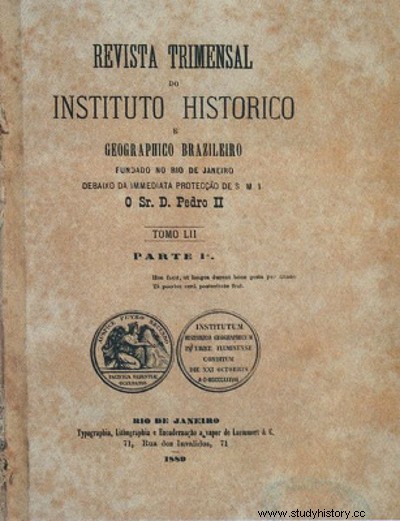
By Me. Cláudio Fernandes
From 1831, when the Second Reign in Brazil, with Pedro II , a true “architecture of the nation” began to be carefully thought out and executed, especially by great personalities from the political and intellectual milieu who surrounded the figure of the young emperor. One of these great intellectuals was José Bonifácio de Andrada e Silva, one of those responsible for the policy of integration and solidification of the Brazilian National State. It was in this context that the Institute was born History and Geographical Brazilian , known by the acronym IHGB.
OIHGB was created in 1838 at the suggestion of the canon January da Wedge Beard and Marshal Raimundo Joseph da Wedge Matos. The inspiration of the creators of this institute was eminently European, especially French. The main function of the IHGB would be to promote research agendas and the production of scientific reports on the various regions that made up the nation, thus aiming at a greater understanding of the Brazilian complexity and the production of a identity cultural, social and political. These reports are now published in the institute's quarterly journal.
In this sense, it became essential for the IHGB the responsibility of thinking and elaborating a project of “how to write the history of Brazil”, that is, it was necessary to create a model representation of Brazilian identity through historiographical resources, through concepts that account for the formation of the nation, the races that composed it, the geographic, climatic and economic factors that engendered it, among other aspects. This “history of Brazil” thought by the institute would be aimed at understanding the population as a whole.
As the historian Antônio A. Dihel highlighted:“The IHGB, through the production of historiographical knowledge, sought, in the first place, to enlighten those who occupied the top of the social pyramid, who , in turn, would bring enlightenment to the rest of society, and this was, basically, the central point on which the thinking of the Brazilian nation resided.” (Dihel, Antônio Astor. Historiographical culture:from the IHGB to the 1930s . Passo Fundo:Ediupf, 1998. p. 25)
To this end, the IHGB created, in 1846, a competition open to intellectuals who were willing to prepare a manual on how to write the history of Brazil. The winner of this contest was a German researcher and traveler named Carl Von Martius. It was with Martius that the model for the history of Brazil was born, which took into account the harmonic elements of the three races (native Indians, white Europeans and black Africans) and the influence of territorial extension on the composition of the Brazilian nation. Von Martius' model inspired several generations of historians and writers to think about the history of Brazil.
Even today the IHGB continues with its activities, which have adapted to the current reality in Brazil. Its principles, however, remain the same:“to collect, methodize, publish or archive the documents necessary for the History and Geography of Brazil”.
* Image credits:Commons
